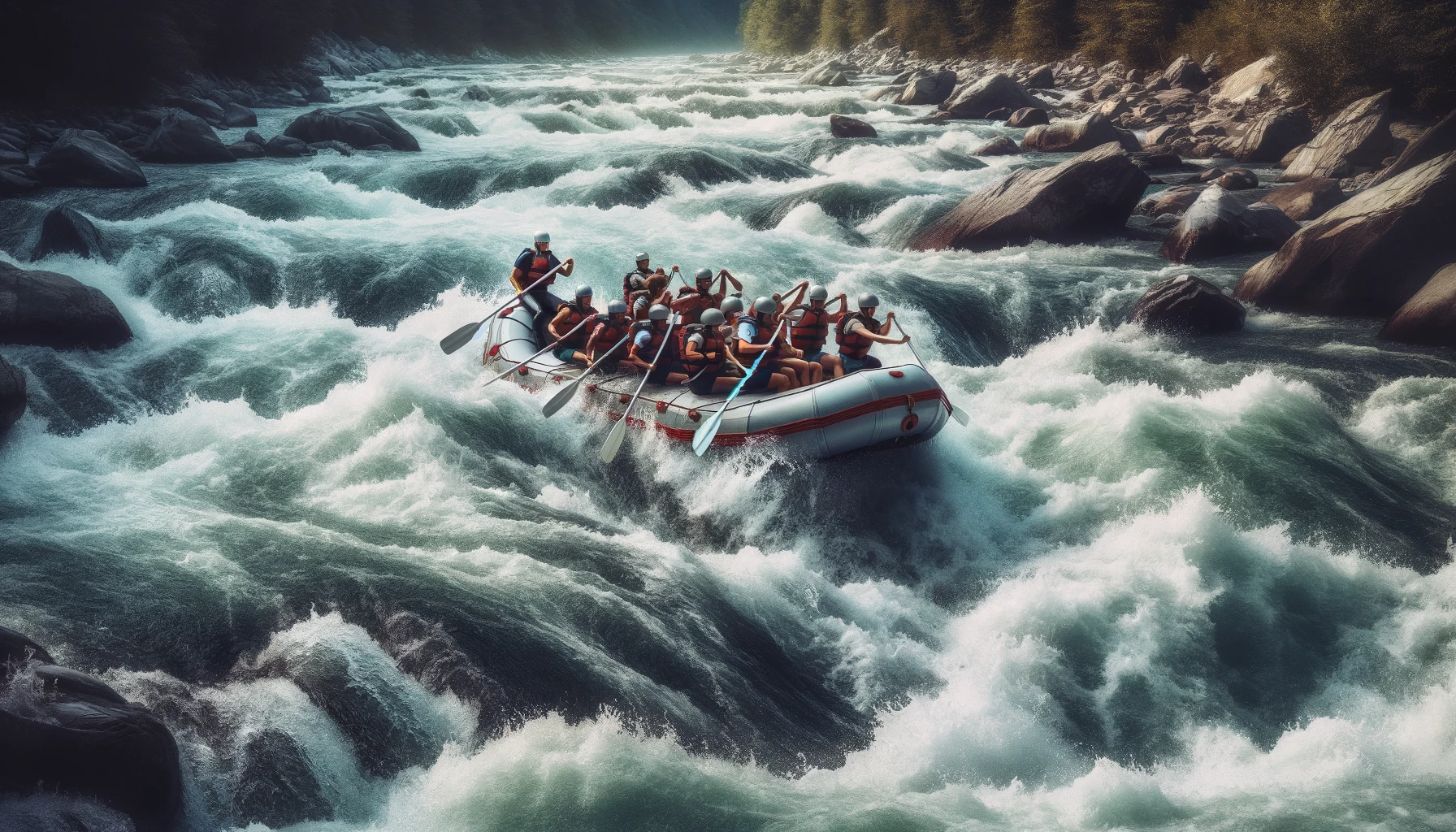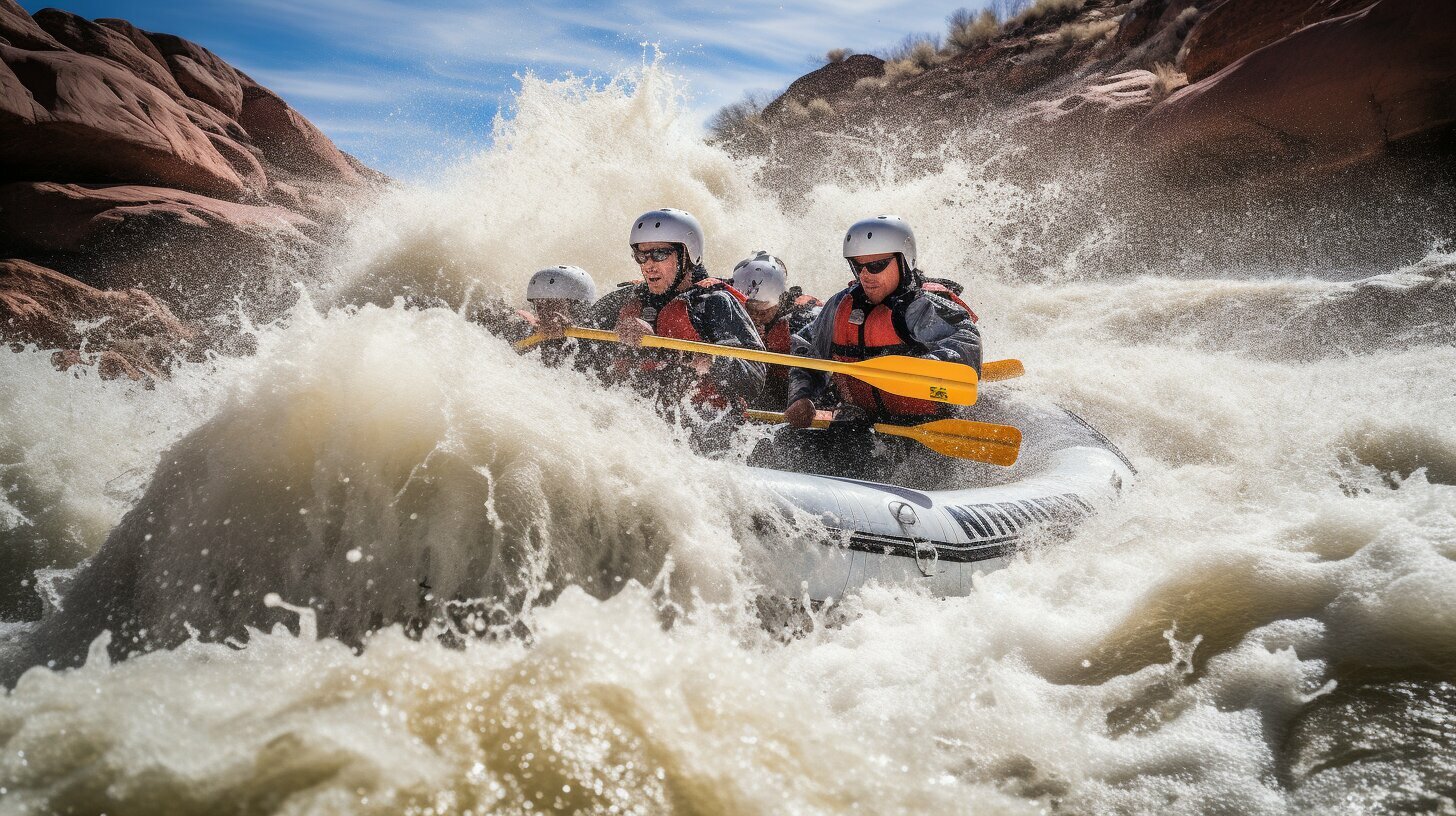If you’re an adventure seeker looking to explore the thrill of whitewater kayaking, choosing the right kayak is crucial. With so many options available on the market, selecting a whitewater kayak can be a daunting task. However, with the right guidance, you can find a kayak that suits your paddling style and skill level. This kayak buying guide will provide you with expert advice on selecting a whitewater kayak that’s perfect for you.
Key Takeaways
- Choosing the right whitewater kayak can greatly enhance your paddling experience.
- Factors such as kayak type, size, material, stability, and maneuverability should all be considered when selecting a kayak.
- It’s important to test out and demo kayaks before making a purchase, and to read reviews from experienced paddlers.
- Setting a realistic budget and properly maintaining your kayak can also impact your overall paddling experience.
Factors to Consider When Choosing a Whitewater Kayak
If you are new to whitewater kayaking, you may wonder what to look for when selecting a kayak that best suits your needs. It’s crucial to choose the right kayak that matches your skill level and paddling preferences. The following are the factors you should consider before purchasing a whitewater kayak:
1. Skill Level
Your skill level is probably the most crucial factor to consider when selecting a kayak. If you’re a beginner, we recommend starting with a stable and forgiving kayak that’s easy to control. Look for kayaks with rounded hulls and wider beams, which provide great stability and maneuverability. The best whitewater kayak for beginners is typically a river runner or a creek boat.
Disclosure: When you buy through links on our site, we may earn an affiliate commission.
If you’re an intermediate or advanced paddler, you may want a kayak with more speed and responsiveness. Playboats are great for performing tricks and playing in the waves, while creek boats are excellent for tackling steep and rocky rapids.
2. Kayak Type
The type of kayak is also something to consider carefully. Each type of kayak has unique features that affect its performance. Playboats are relatively short and have a flat hull, making them highly maneuverable but slower than other kayaks. River runners are versatile and can handle various water conditions. Creek boats are designed to handle steep drops and technical rapids.
3. Size
Kayak size is critical, as it affects both comfort and performance. The size of your kayak depends on your height, weight, and paddling preferences. A kayak that is too small can feel cramped and uncomfortable, while a kayak that is too large can be challenging to control and maneuver. Generally, the longer the kayak, the faster it is, and the shorter the kayak, the more maneuverable it is.
4. Material
The material of the kayak impacts its durability, weight, and cost. Plastic kayaks are usually the cheapest and most durable but are heavier than other materials. Fiberglass kayaks are lighter and faster but less durable. Carbon fiber kayaks are the most lightweight and fastest but are also the most expensive and fragile.
5. Stability and Maneuverability
The stability and maneuverability of a kayak affect its ease of control and handling. A kayak with more primary stability feels more secure and stable on flat water, while a kayak with more secondary stability remains stable in rough water and turns more easily. The rocker profile of a kayak also affects how it performs, with more rocker providing more maneuverability in rapids.
By considering these factors, you will be on your way to selecting the best whitewater kayak for your skill level and paddling preferences. Keep in mind that the right kayak can make all the difference in your paddling experience.
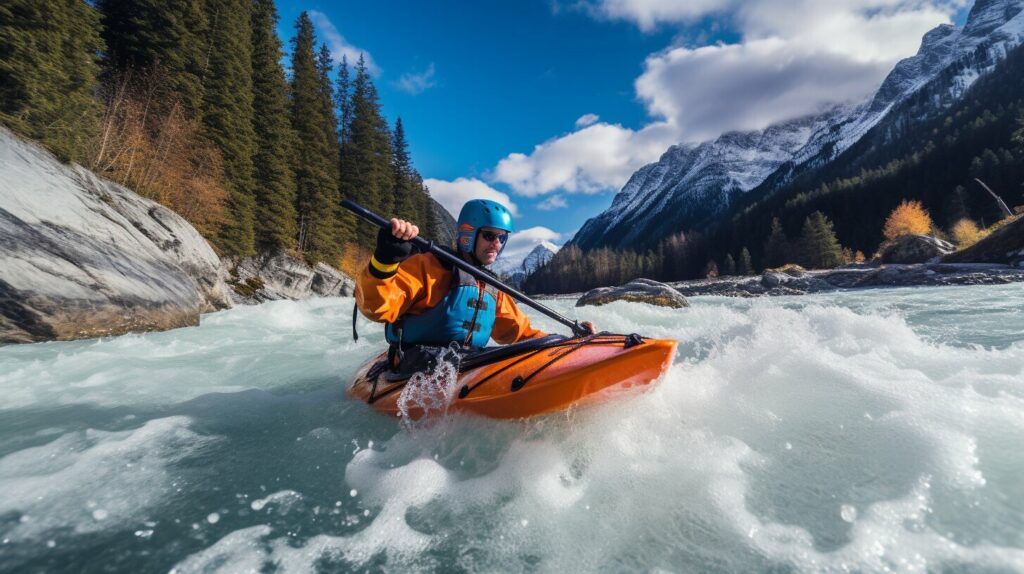
Understanding Whitewater Kayak Types
Before selecting a whitewater kayak, it’s important to understand the different types of kayaks available. Each type has unique features and intended uses, so choosing the right type is crucial to your paddling experience.
Playboats
Playboats are designed for performing tricks and maneuvers in small, fast-moving water. They are typically shorter in length (6-7 feet) and have flat bottoms and sharp edges, making them highly maneuverable. However, they can be difficult to control in flat water and are typically not suitable for longer trips.
River Runners
River runners are versatile kayaks that can handle a variety of water conditions. They are longer in length (8-9 feet) and have a more rounded bottom, making them more stable in flat water. River runners are a great choice for beginners and intermediate paddlers who want a kayak that can handle both rapids and calm stretches of water.
Creek Boats
Creek boats are designed for more advanced kayakers who want to tackle steep, technical rapids. They are longer in length (9-10 feet) and have a rounded hull with more volume, making them more buoyant and able to handle larger drops. Creek boats are not as maneuverable as playboats, but they offer more stability and control in fast-moving water.
Slalom Kayaks
Slalom kayaks are designed for racing through gates on a whitewater course. They are longer in length (10-12 feet) and have a narrow, pointed hull for maximum speed. Slalom kayaks are not recommended for beginners, as they require a high level of skill and experience to maneuver.
When selecting a whitewater kayak, consider the type of paddling you plan to do and choose a kayak that best suits your needs and experience level.
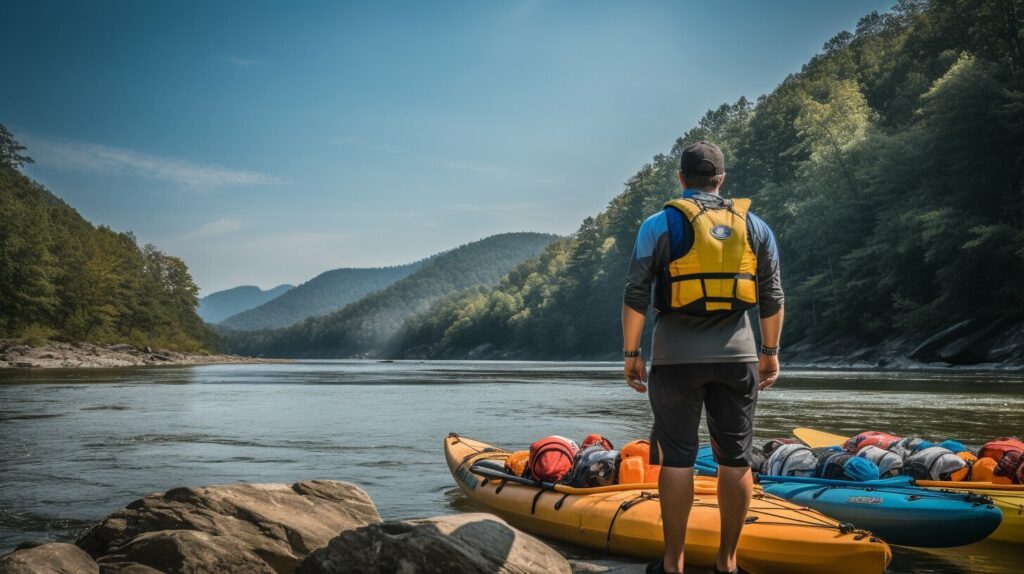
Finding the Right Size for Your Whitewater Kayak
Choosing the right size kayak is crucial for both safety and performance. A kayak that is too small may feel unstable and difficult to control, while a kayak that is too large can make maneuvering cumbersome. Here are some tips to help you determine the right size for your whitewater kayak:
| Your Height | Kayak Length |
|---|---|
| Less than 5’4″ | 6-7 feet |
| 5’4″ – 5’10” | 7-8 feet |
| 5’10” – 6’2″ | 8-9 feet |
| Over 6’2″ | 9 feet or more |
Keep in mind that these are just general guidelines and may vary depending on other factors such as your weight and paddling style. It’s always a good idea to test out a kayak before making a purchase to ensure the size is right for you.
The size of the cockpit also plays an important role in the fit of your kayak. A larger cockpit allows for easier entry and exit, but may also allow more water into the kayak. A smaller cockpit provides a snug fit, but can make entering and exiting more difficult. Consider your personal comfort level and paddling goals when selecting the cockpit size.
Another factor to consider is the width of the kayak. A wider kayak provides more stability, but may sacrifice speed and maneuverability. A narrower kayak is faster and more maneuverable, but may be less stable. Again, it’s essential to find the right balance between stability and performance based on your skill level and paddling goals.
Remember that selecting the right size for your whitewater kayak is critical for a safe and enjoyable paddling experience. Take the time to consider your options and test out different kayaks before making a final decision.
Considering the Material of Your Whitewater Kayak
Another important factor to consider when selecting a whitewater kayak is the material it’s made of. Kayaks are constructed using a variety of materials, each with its own advantages and disadvantages. The most common materials used in making whitewater kayaks are plastic, fiberglass, and carbon fiber.
Plastic kayaks are the most affordable option, making them a popular choice among beginners. They’re durable, easy to repair, and can withstand rough handling. However, plastic kayaks tend to be heavier and less agile than other materials, which may affect their performance on the water.
Fiberglass kayaks are lighter and more maneuverable than plastic kayaks, making them a favorite among intermediate and advanced paddlers. They’re also more durable than plastic kayaks and offer better performance in terms of speed and agility. However, fiberglass kayaks are more expensive and require more maintenance than plastic kayaks.
Carbon fiber kayaks are the lightest and most high-performance option available. They’re fast, agile, and responsive, making them ideal for expert paddlers. Carbon fiber kayaks also tend to be the most expensive, and they require a higher level of maintenance compared to plastic and fiberglass kayaks.
Ultimately, the material you choose will depend on your budget, skill level, and paddling preferences. Keep in mind that higher quality materials will generally result in a more expensive kayak, so it’s important to set a realistic budget before making a final decision on which material to choose.
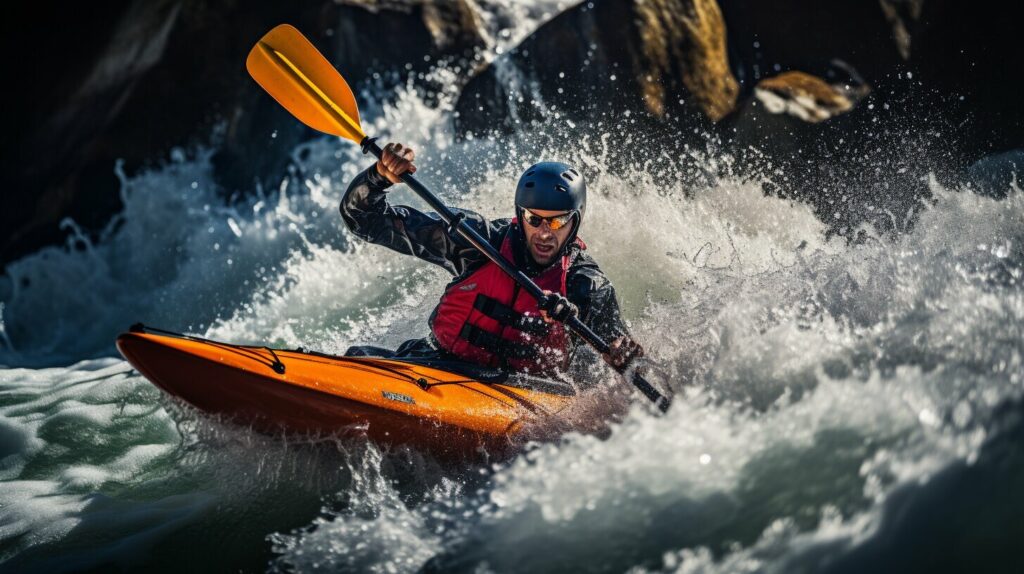
Evaluating Kayak Stability and Maneuverability
When selecting a whitewater kayak, it’s essential to consider the stability and maneuverability of the kayak. These factors can significantly impact your paddling experience and overall performance on the water.
Kayak stability refers to the ability of the kayak to maintain balance and resist tipping over. The stability of a kayak is determined by the design of the hull and the width of the kayak. Wide kayaks typically offer greater stability, making them an ideal choice for beginners. However, narrower kayaks are more maneuverable and responsive, providing greater control for more experienced paddlers.
Kayak maneuverability refers to the kayak’s ability to turn and change direction easily. Kayaks with a lot of rocker, or upward curve in the bow and stern, offer greater maneuverability. This design allows the kayak to pivot quickly, making it easier to navigate through rapids and around obstacles. However, too much rocker can sacrifice the kayak’s speed and stability.
When evaluating the stability and maneuverability of a kayak, it’s important to consider your paddling skill level, the type of water you’ll be paddling in, and your intended use for the kayak. If you’re a beginner paddler or plan to paddle in calm rivers and lakes, a more stable kayak may be a better choice. If you’re more experienced and plan to paddle in whitewater rapids, a kayak with greater maneuverability may be necessary.
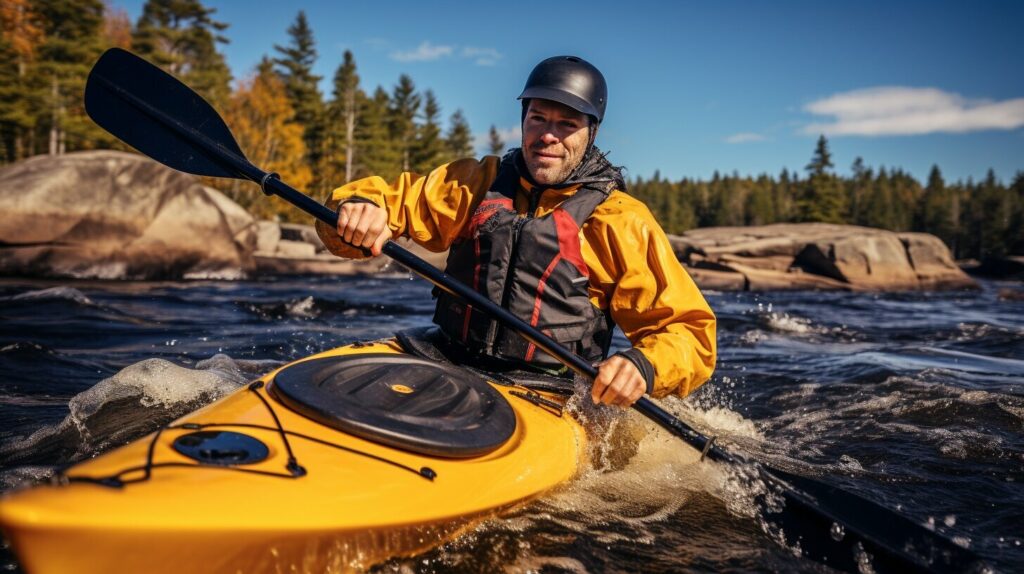
Keep these factors in mind when selecting a whitewater kayak to ensure you choose a kayak that’s right for you.
Testing Out Whitewater Kayaks
Once you have narrowed down your choices for a whitewater kayak, it’s essential to test them out before making a purchase.
Find a local dealer or outfitter that offers test paddling or demo days. This will give you the opportunity to try out different kayaks and determine which one best suits your needs.
When testing out a kayak, take it on the water and see how it handles. Notice how it feels when you paddle and maneuver it through various conditions. Pay attention to the kayak’s stability, responsiveness, and overall comfort.
It’s also a good idea to bring along a trusted friend or experienced paddler who can offer feedback and help you evaluate the kayak’s performance objectively.
Remember, choosing the right kayak is a highly personal decision, and what works well for one paddler may not be ideal for another. Therefore, it’s critical to find the right fit for your skill level, body type, and paddling style. Utilize demo days and test paddles to help you make an informed decision and find the right kayak for your needs.
Picking the Perfect Whitewater Kayak: Reading Reviews and Recommendations
Once you have a good idea of the type, size, and material of kayak that best meets your needs, it’s time to research the top-rated whitewater kayaks available.
Reading reviews and seeking recommendations from fellow paddlers can offer valuable insights into the performance and reliability of different kayaks.
Online forums and review websites such as Paddling.com and OutdoorGearLab.com are great sources of unbiased opinions and experiences from a range of kayaking enthusiasts.
When reading reviews, pay attention to common themes and issues that arise across multiple comments. This can help identify potential flaws or strengths of a particular kayak model.
It’s also a good idea to seek advice from experienced paddlers in person. Ask for recommendations or join a local paddling group to get a hands-on look at different kayaks.
Remember, while reviews and recommendations can offer valuable guidance, ultimately, the perfect whitewater kayak for you is one that suits your specific needs and preferences.
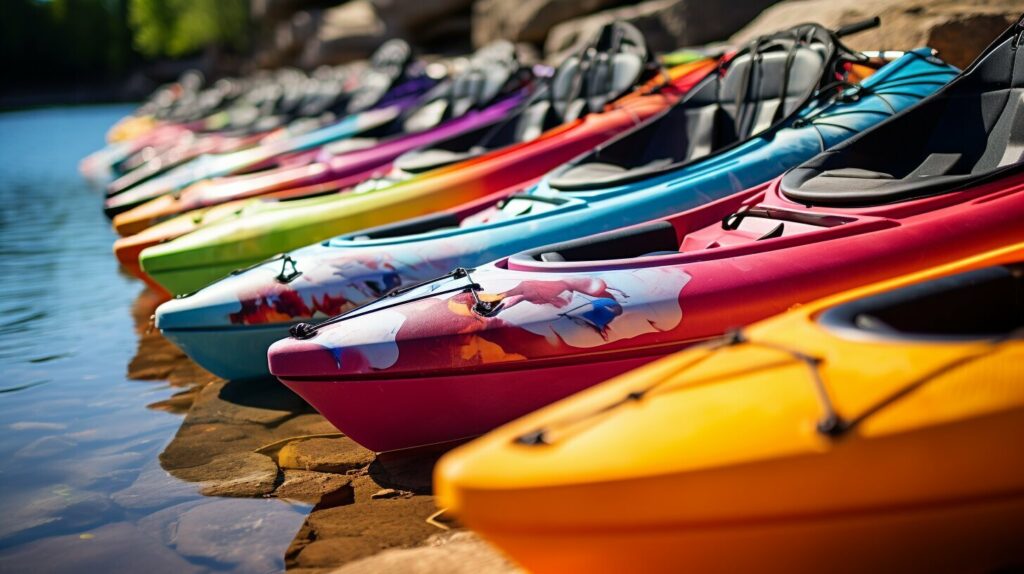
Setting a Realistic Budget for Your Whitewater Kayak
When selecting a whitewater kayak, it is essential to set a realistic budget. Kayaks come in a range of prices depending on their materials, features, and quality. By establishing a budget, you can narrow down your options and find the kayak that best fits your needs without overspending.
Before making a purchase, take some time to research the different types of kayaks and their average prices. Keep in mind that higher-priced kayaks often come with additional features, such as better materials, improved maneuverability, and increased stability. However, more affordable options can still provide a satisfactory experience and are suitable for beginners or those on a tight budget.
When creating your budget, consider additional costs beyond the kayak itself, such as paddles, life jackets, and other necessary equipment. It is also important to factor in the cost of transporting your kayak to the water, storage, and any repairs or maintenance that may be needed.
If you are new to kayaking or unsure of your long-term commitment to the sport, consider purchasing a used kayak or renting one before committing to a new purchase. This can be a cost-effective way to gain experience and confidence before investing in a new kayak.
Ultimately, the price of your whitewater kayak will depend on your personal preferences and budget. By setting a realistic budget and doing thorough research, you can find a kayak that meets your needs and provides an enjoyable paddling experience.
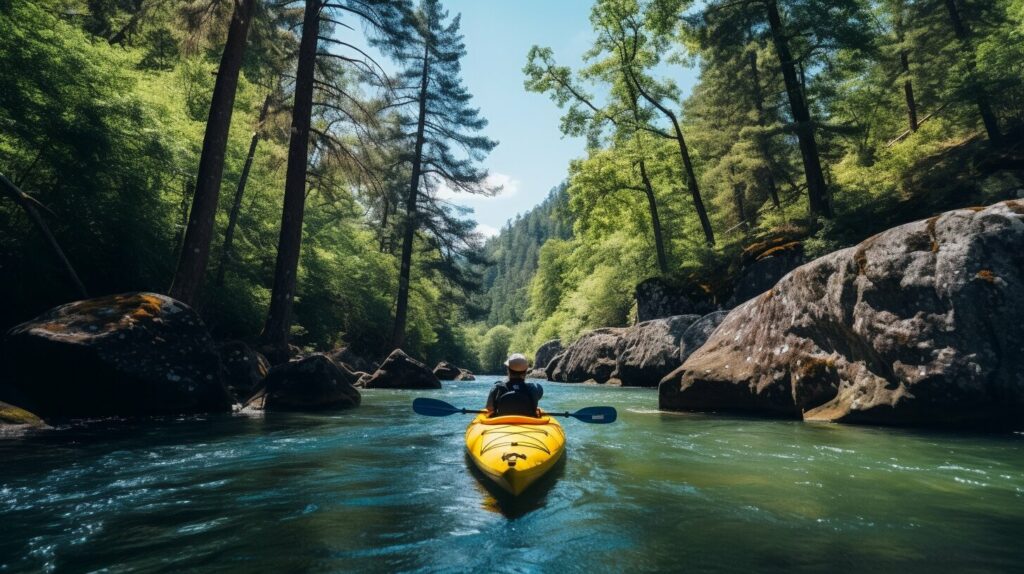
Maintaining and Caring for Your Whitewater Kayak
You’ve found the perfect whitewater kayak and are now ready to hit the rapids. However, your job isn’t quite done yet. Proper kayak maintenance is crucial to ensure your kayak’s longevity and performance. Here are some tips for maintaining and caring for your whitewater kayak:
Storage
Storing your kayak properly is important to protect it from damage and prolong its lifespan. Store your kayak in a cool, dry place, away from direct sunlight. If possible, store it upside down to prevent the weight of the kayak from warping the hull. If you need to store your kayak outside, use a kayak cover to protect it from the elements.
Cleaning
After each use, rinse your kayak with fresh water to remove any dirt, sand, or debris. Use a mild soap and water to clean the kayak, and avoid using harsh chemicals or abrasive materials that can damage the kayak’s surface.
Basic Maintenance
Regularly inspect your kayak for any signs of wear and tear, such as cracks or holes. Repair any damage promptly to prevent it from getting worse. Lubricate the kayak’s moving parts, such as the rudder or skeg, as needed.
Protecting the Hull
The kayak’s hull is the most important part to protect, as it controls the kayak’s maneuverability and stability. Avoid dragging your kayak on rough surfaces, and never jump on or stand on the kayak. If you need to transport your kayak on a roof rack or trailer, use padding to protect the hull from scratches or dents.
By following these basic maintenance practices, you can ensure that your whitewater kayak stays in great shape for years to come. Happy paddling!
Conclusion
Choosing the right whitewater kayak can greatly enhance your paddling experience. By considering factors such as your skill level, kayak type, size, material, stability, maneuverability, and budget, you can make an informed decision that will suit your specific needs.
Remember to test paddle different kayaks and read reviews from experienced paddlers to find the perfect fit. Once you have made your purchase, it is important to properly care for your kayak to ensure its longevity.
By following this expert guide on how to choose the right whitewater kayak, you can select a kayak that will provide you with a safe and enjoyable experience on the water.
FAQ
Q: How do I choose the right whitewater kayak?
A: Choosing the right whitewater kayak involves considering factors such as your skill level, kayak type, size, and material. It’s important to find a kayak that suits your needs and abilities.
Q: What are the different types of whitewater kayaks?
A: There are several types of whitewater kayaks, including playboats, river runners, creek boats, and slalom kayaks. Each type has its own unique features and intended uses.
Q: How do I determine the right size for my whitewater kayak?
A: The right size for your whitewater kayak depends on your height, weight, and paddling preferences. It’s important to consider sizing guidelines and how it affects the kayak’s performance.
Q: What materials are used in whitewater kayaks?
A: Whitewater kayaks can be made from materials such as plastic, fiberglass, and carbon fiber. Each material has its own pros and cons, so it’s important to weigh your options.
Q: How do stability and maneuverability impact a whitewater kayak?
A: Stability and maneuverability are crucial factors in a whitewater kayak. The hull design and rocker profile play a role in determining how a kayak performs on the water.
Q: Should I test out a kayak before buying?
A: It’s highly recommended to test paddle a kayak before making a purchase. This allows you to evaluate its performance and ensure it meets your expectations on the water.
Q: How can I find trusted reviews and recommendations for whitewater kayaks?
A: Reading reviews and seeking recommendations from experienced paddlers can be helpful in finding the best whitewater kayak. There are trusted sources and websites that provide valuable insights.
Q: How much should I budget for a whitewater kayak?
A: Setting a realistic budget for your whitewater kayak purchase is important. Consider the cost considerations and explore options within your budget range.
Q: How do I properly maintain and care for my whitewater kayak?
A: Maintaining and caring for your whitewater kayak involves practices such as proper storage, regular cleaning, and basic maintenance. These practices help prolong the lifespan of your kayak.


